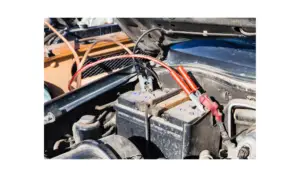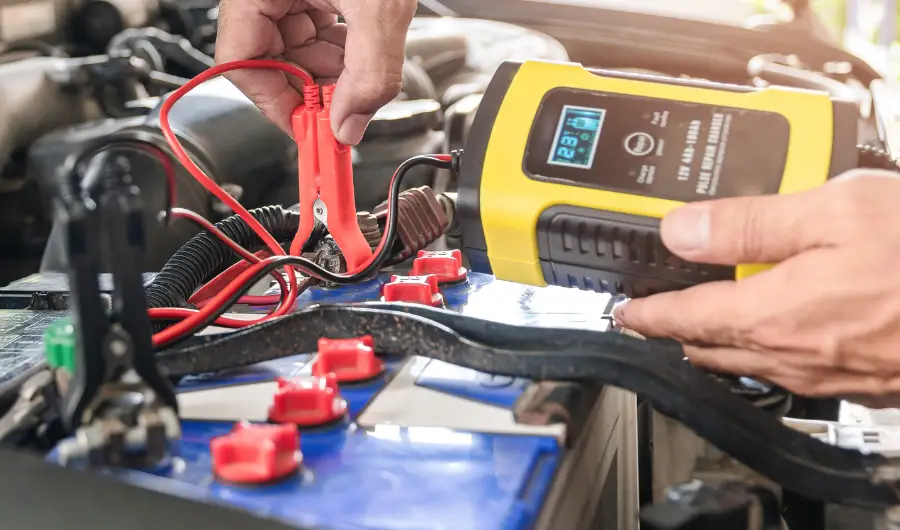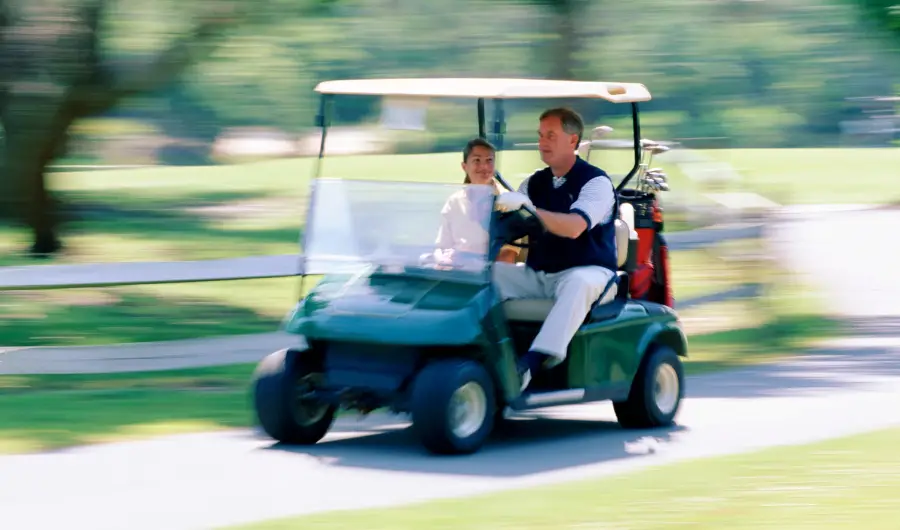Last summer, I decided to treat myself to a new adventure on the golf course by investing in an advanced electric golf cart. It was a perfect addition to my golfing adventures, promising the convenience of not having to walk through the course along with an enjoyable ride.
However, my enthusiasm soon met with a challenge. After extensive use, the cart’s wheels started to cause trouble. This unforeseen problem led me to understand and resolve the problem, turning myself into a determined problem-solver and allowing me to learn lessons along the way.
When it comes to Advanced EV golf carts, you have to understand that even the most forward technology can encounter challenges. From battery problems to motor issues, misaligned wheels to faulty speed controllers, these problems can hurt your game.
Now, the question arises, what are some common Advanced EV Golf Cart problems and their fixes?
This may include battery issues, motor malfunctions, solenoid failure, direction switch problems, and speed controller woes. However, the issues can be resolved by checking connections, cleaning corrosion and dirt, or repairing or replacing damaged parts if necessary.

With that said, I’ll try my best to enlist some of the common advanced EV golf cart consequences you might face, along with the possible solutions that can be done easily without needing an expert
Let’s start!
Navigating Common Advanced EV Golf Cart Problems and Their Solutions
Recognizing the problem is the first step toward troubleshooting your cart. Now we will look over all the major problems, their potential causes, and DIY ways to get through them swiftly.
Problem 1 – Battery Blunders
Battery woes are usually the first ones to get to a cart owner. The plus side is that they are easy to fix and can be avoided with timely maintenance.
How to spot the problem?

When your cart is not starting on pressing the pedal, your first concern should be the batteries. Attach a voltmeter to your batteries and see if they have the minimum threshold to be charged again, i.e., 25-30 volts. Otherwise, look for any visual signs of damage.
What are the causes of Battery malfunctions?
If your charger is old, worn-out, or just plain damaged, it can mess with the health of your batteries. Neglecting your cart’s maintenance can be a real battery killer. Dirt, rust on metal parts, fluid leaks, and irregular charging patterns are all dangerous. Follow the proper charging procedures.
Water and carts don’t mix well. If water finds its way into your cart, it can wreak havoc on the wiring and the batteries. If you get caught in the rain or decide to bathe your cart, know it can be a risk.
Loose cables are like roadblocks for the current flowing through your batteries. Wiggly or loose cables can cause serious damage to your cart. Extreme weather can also be tough on batteries. Freezing cold or scorching hot temperatures are not their friends.
DIY Fixes for the Battery Woes

After finding 25-30 volts on your batteries, look out for any visible signs of damage. Inspect the charger. Take a good look at its motor, cables, and terminals. If you spot any wear and tear, it’s probably time to find a new one.
Dirt, rust on the metallic bits, leaking fluid, and irregular charging patterns are all risk factors for damage. Give your cart a good clean. Follow the proper charging procedures. If the cart gets wet, dry it off thoroughly and wipe all the parts with a soft cotton cloth. Any lingering moisture can cause trouble. Inspect all the connections and make sure they’re tightly secured.
If you encounter rust on the battery terminals or other metal components, don’t fret. Mix water and baking soda to create a paste. Grab a brush and gently scrub away the rust. Rinse everything off thoroughly and don’t forget to apply a protective coat of anti-corrosive spray.
If your batteries have fallen victim to extreme weather conditions or other issues beyond your DIY range, seek the assistance of an expert who can easily diagnose and remedy the situation.
Battery woes are usually the first ones to get to a cart owner. The plus side is that they are easy to fix and can be avoided with timely maintenance.
🚩 Recommended Guide: How Long Should You Charge The Golf Cart
Problem 2 – Motor Mysteries
The motor is the heart of any golf cart. If there is some electrical disturbance, blockage in the current flow, or reduced power, your cart will eventually have to go through heart failure.
How to spot the problem?
If it is all good with your golf cart’s battery, the next potential common problem with your cart might be the motor. If your cart is making weird loud noises and getting heated up, maybe it’s a motor issue.
What are the causes of Motor issues?
When you push your cart to the limit with excessive use, motors can get overheated. They struggle to keep cool, leading to performance issues.
Electrical issues can also affect your motor’s performance. Damaged wires, loose cables, and faulty wiring can disrupt the flow of power, causing power loss or inconsistent operation. Keep an eye out for any signs of wear and tear in the electrical components.
Over the years, certain parts of the motor can undergo wear, damage, or even corrosion. It’s like the signs of aging getting to your motor’s vitality. If you’ve been riding your cart for a while and notice a decline in performance, you should consider that the age of your motor can be a potential factor.
DIY Fixes for the Motor Malfunctions
The first step is to find a cool place to park your cart and let the hot motor cool down. Once the motor has cooled down, take a closer look at the components and see if you can spot a red reset button. Many motors come equipped with this handy little button to resolve common motor issues. Give it a press and see if it works. This simple reset can often bring your motor back to life and restore its performance.
Now, let’s talk about the wires. If you spot any damaged wires during your inspection, replace those with fresh ones. Tighten the loose connections to ensure a reliable electrical connection. But if your motor is showing signs of being worn out, despite all these efforts, it might be time to consider replacing the motor altogether. Like any mechanical component, motors have a lifespan, and when they’ve reached the end of their run, it’s best to get rid of them and welcome a new one.
Problem 3 – Defective Direction Switch

Golf is all about the perfect direction, sense and control. If your cart’s direction switch is not working, you cannot go through the course.
How to spot the problem?
If you feel like your cart has a mind of its own and it’s not following your direction commands, maybe it has a faulty direction switch. Confirm it from careful observation and testing.
What are the causes of Defective Switches?
One common culprit of the direction switch failure is circuit disturbance. Since the direction switch gets used a lot, it’s more prone to cracks and damage. If there’s any disruption or fault in the circuit, it can mess up the switch and cause it to fail.
Another thing that can mess with the direction switch is connection problems. Over time, the connections in the golf cart’s electrical system can become loose or corroded and mess with the flow of electricity. Plus, if moisture or dirt builds up and causes corrosion on the switch’s terminals, that can also lead to malfunctions.
Sometimes, the switch doesn’t work because of the DC converter, which is responsible for supplying power. It takes the power from the battery and converts it to the right voltage for all the electrical stuff in the golf cart.
DIY Fixes for the Faulty Switches
First things first, visually inspect the switch for any signs of damage or corrosion. If you spot any, grab a cleaning solution that’s safe for electrical components, and give the switch and its terminals a nice scrub. Now, check all the wiring connections to the switch. Make sure everything is nice and tight.
If your switch isn’t working because of the DC converter, contact the manufacturer or consult a professional to ensure you get the correct DC converter for your golf cart.
If these DIY fixes haven’t resolved the issue and your switch is still acting up, it might be time to consider replacing it.
Problem 4 – Solenoid Struggles
The functionality of the solenoid is extremely important. It decides if your motor will be provided with power or not.

How to spot the problem?
Solenoid is an electromagnetic coil that makes a clicking sound when you start the cart. If you do not hear that click, it indicates a broken solenoid.
What are the causes of a Damaged Solenoid?
The first cause of a damaged solenoid is connection issues. Loose wires or corrosion on the parts doesn’t let the current flow smoothly. If the coil of your solenoid becomes frayed or damaged over time, the solenoid can’t function mechanically.
Sometimes, dirt or debris can find its way into the solenoid’s coil. When the coil gets clogged up with gunk, its movement is restricted. It causes trouble for the solenoid and your direction switch. Another cause can be overheating. If there’s excessive current flowing through the coil and no outlet for ventilation, it can lead to overheating.
DIY Fixes for the Sloppy Solenoid
First of all, check for any loose wires or corrosion on the parts. If you spot any loose connections, make sure to tighten them up. And if you notice any corrosion, grab a wire brush or some sandpaper and gently clean off that gunk. Now, if your solenoid is acting up due to a worn-out coil, it might be time for a replacement. You can find replacement solenoids online or at your local golf cart parts store. Just make sure to follow the manufacturer’s instructions when installing the new solenoid..
If you suspect debris entrapment, carefully inspect the coil for any dirt or debris. If you spot anything, use compressed air or a small brush to remove it.
If your solenoid is getting too hot due to excessive current flow, check the battery voltage and ensure it’s within the recommended range. If the voltage is too high, you may need to adjust the charging system or consult a professional for assistance. Additionally, consider improving the solenoid’s ventilation by ensuring there’s proper airflow around it.
Problem 5 – Speed Controlling Issues
The speed controller allows you to go slow or swift across the course. It converts the pressure of the pedal into electrical signals and controls the acceleration of your cart; however, faulty controllers can pose a safety risk, causing potential accidents.

How to spot the problem?
Speed-controlling issues can be felt if your cart’s speed suddenly increases or decreases on its own.
What are the causes of Speed Controlling Malfunctions?
A very common cause of speed-controlling problems is a faulty potentiometer. If the potentiometer is damaged or worn out, it can result in inconsistent voltage output.
Sometimes, the tuning of your golf cart can go haywire, resulting in incorrect speed controller settings. It occurs due to calibration faults in your golf cart. The problem may also lie in the controller system itself. Factors such as, internal parts failure, water damage, corrosion, or worn-out wires can all wreak havoc on your controller.
DIY Fixes for a Faulty Speed Controller
If you suspect a faulty potentiometer, it might be time to consider replacing it. You can find replacement potentiometers online or at a local electronics store. Just make sure to follow the manufacturer’s instructions for installation.
To recalibrate the controller, consult your golf cart’s manual or reach out to the manufacturer for specific instructions. They’ll be able to guide you through the process and ensure your speed controller settings are back on point.
If you suspect a controller malfunction, it’s best to inspect the controller for any visible signs of damage, such as water ingress or corrosion. If you spot any issues, replacing the controller or seeking professional assistance for repairs may be necessary.
Avoid any forthcoming problem by taking these precautions
A few considerations can help you avoid the big consequences. To prevent major advanced EV golf cart problems, you have to focus on key components.
Maintaining the battery is the first and foremost step for preventing damage in any golf cart. Keeping its terminals clean, avoiding overcharging, and recharging after every use.

Inspect your motor regularly, and clean and lubricate it to avert any glitches before they escalate. To avoid a faulty direction switch, treat it delicately. Inspect and clean it regularly. The same goes for the speed controller. Also, keep a check on tires and brake systems. Replace if you suspect any wear or rigidness. You can dodge the most common cart problems by implementing these precautions.
🚩 Recommended Read:
Wrapping it up
Now that we’ve covered the most common issues that may arise with your advanced EV golf cart, it’s essential to remember that the solutions and consequences remain consistent, regardless of the cart model you use. When faced with any of these problems, follow the steps we discussed above, armed with the basic tools you can keep in your toolbox.

Prioritize maintenance and timely care to avoid major damage. Regular inspection and care will keep your cart running smoothly on the greens for many rounds to come.
However, it is noticeable that some complex problems always need an expert touch; that being said, if there is something with the Armature windings or any major repair, I would strongly recommend going nearby cart repair shop.
Common Related Questions
What are some common advanced EV golf cart problems?
The most Common Advanced EV golf cart problems include Battery issues, Motor Problems, a Faulty Solenoid, Direction Switch malfunctions, and Speed Controller woes. All of these problems are reversible and can be solved by following the easy DIY steps provided in this guide.
How can I troubleshoot battery-related issues in my advanced EV golf cart?
Proper maintenance is the key to a healthy battery. Check your cart’s fluid level, cleanliness, corrosion status, and wire condition. Store the cart inside in a cool, dry place, and always consider any small glitches. Also, check if you are using the right charger.
What are the possible causes of motor and powertrain problems in advanced EV golf carts?
If you have an old worn motor, it is bound to have some issues. Overheating, faulty wirings, loose connections, and frayed cables can cause your motor to shut down.
What are the potential causes of charging difficulties for advanced EV golf carts?
Charging problems go hand in hand with battery woes. If you are facing difficulty in charging your cart, check your batteries. Maybe they are excessively dismissed or damaged and not picking up the charge. If the batteries are right, try using a different charger.
Jabez is the guy who started this blog with Bryan. He’s been playing golf since a young age and has a lot of experience to share. But more importantly, Jabez is someone who is always looking to help others out. He’s got a great sense of humor and is always up for a good laugh. But most importantly, Jabez is someone who cares about his followers and always wants to help them improve their game. For any queries reach out to him at Jabez@iamlearninghowtogolf.com.
